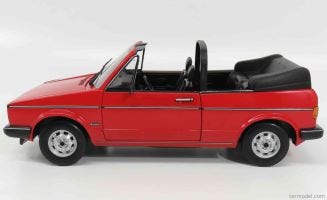Author interview series: Maria Tosti
Maria Tosti is the author of the untitled poem published in our second edition (May 2025)
Read Untitled
(Author portrait was provided by author.)
What is your relationship with Hanoi and/or Vietnam?
🌸
I would say that my relationship with Hanoi and Vietnam is purely professional and at this time also literary, apparently!
I work for an Italian tour operator specializing in "out going." Among the destinations we propose to Italian tourists is Vietnam. I have not yet had a chance to visit your country but hope to do so sooner or later. I would like to do a classic tour, discovering the history and places of major artistic and cultural interest
If you could describe Hanoi and/or Vietnam in one word, what would it be and why?
🌸
One word alone would not be enough to describe Hanoi, also called "the city across the river," and the whole of Vietnam, at least as far as I am concerned.
I know that Hanoi is an ancient city, but at the same time dynamic, forward-looking, and very hard-working.
Vietnam is a fascinating destination where history, culture and nature combine excellently with each other. Every corner of the country offers special and unrepeatable experiences. In addition, the Vietnamese people are notoriously welcoming and smiling, know how to live in harmony with nature, and make their hospitality an inescapable trait of their land.
I speak very much as an "insider," but it is stronger than me. A professional habit I have to admit. That's how you get when you do this job! (LOL)
What inspired the untitled poem?
🌸
The memory of my first car in a moment of deep nostalgia, reflecting on the passing of time. Among the cars I have had, very few, this convertible will always remain my favorite. It was a scarlet red Volkswagen Golf Cabriolet 1100 GL with a black top.
I don't know how you get attached to a car but it happens. After all, you could say that the first car is a bit like the first love, you never forget it. I had even given it a name: 'Camilla'.
The first experiences driving it, the first adventures in the places where it took me and the people with whom I was able to share these experiences, I think influenced to make it unforgettable. Moreover, I was very young and that alone is enough to make memorable events, memories and adventures on the road.
On the day I took it to scrap, after many years of honorable service, I won't say I cried, but almost.
In fact, when I think about it, it was like saying goodbye to a piece of my life, to a part of the most beautiful and carefree years of my youth.
Anecdotes related to it still come back to my mind, the drives with friends on holidays to visit some new place or to go sunbathing at Lake Trasimeno or Mount Subasio or the evenings when I went Latin dancing.
I also remember very well my struggles in saving the money to buy it with my first salaries. And it was a used car, too! But it was the one I wanted most.
However, it was not always an idyllic, "it wasn't all puppy dogs and rainbows". (LOL) It also had an accident but nevertheless made a comeback in a short time. While in recent years, on rainy days, I was forced to drive around with towels placed on the front seats near the windows because the window seals no longer closed well enough, due to wear and tear. I held on as long as I could and my convertible car with me. Then I had to make the bitter decision to say goodbye to it.
Now all I have as a memory is a 1:43 scale model car on a shelf in my library. I would like to find another collector's model in a larger scale, like 1:18, but so far I have not been able to find it.
(Photos are taken from online sources and provided by author.)
Can you walk us through your creative process when creating this piece?
🌸
The draft of this poem was initially born in Italian but I then preferred to rework the concept in English. I thought of it as a Haiku or a Senryu, according to the Anglo-Saxon freestyle, so it does not respect the classical 5-7-5 English metric. This type of composition does not have to have a title; it was given because it is mandatory for submission and also to recognise it from other Haiku and Senryu that I send out into the world for other selections.
Regarding Kigo, I have referred to the Italian Saijiki of the Cascina Macondo cultural association, which indicates the word 'youth' and therefore also 'youthfulness' as Kigo Temporis. This is probably a purely Italian classification. Then we also know that the Senryu itself may not have the Kigo. Moreover, it is worth remembering that the Saijiki has been somewhat expanded, revised and readapted in some western countries, precisely to be more appropriate and as close as possible to expressing certain typical characteristics and ways of life of those countries.
It was all this that I thought about while editing the composition and while deciding on the cut and the final version to give it.
Were there any particular challenges you faced while working on this piece?
🌸
One challenge: to express the concept in only three short lines. (LOL) With a longer free verse poem, I could certainly have told this little story better, but I preferred to make it as concise as possible. It certainly was influenced by the fact that I have enjoyed trying my hand at writing Japanese-style essays for several years.
What do you hope readers take away from the piece?
🌸
I hope readers will experience a moment of lightness but also a moment of reflection and wisdom. Maybe someone can find himself in my verses, who knows maybe he has had a similar experience to mine and matured similar reflections.
I leave it to each reader to discover sensations and emotions according to their own feeling. Each poem, even the smallest, is a story, a short film that the mind develops word by word.
Dwelling on the metaphor of passing time, one can see how one grows and changes even when driving a car. When you are young, you can drive a convertible with a certain spirit of adventure. When you get older, however, and your neck gets sore, it is no longer the same! (LOL).
Are there any authors/artists or works that have influenced your style?
🌸
It depends on the periods of life and the type of composition I adopted, studied and developed at that particular time. I have not always written haiku, senryu or tanka metrically or without; I initially wrote mainly in free verse but have also tried my hand at acrostics, calligrams, even song lyrics.
I can be inspired by the Italian Giacomo Leopardi as well as the Japanese Basho, depending on what I am approaching to write, without forgetting other illustrious poets of the world.
A message to the Writing Dragons editors?
🌸
I sincerely thank the editors of Writing Dragons for the wonderful opportunity they have given me by hosting me in the pages of this interesting literary journal. It is a real honor for me.
As far as I have been able to read and observe, they are doing an excellent job. To all of them go my sincerest congratulations and all my respect. Carrying on a literary journal I think requires a lot of effort and cooperation from everyone, editors and authors. It also requires being forward-looking and, at the same time, keeping up with the times and finding more and more interesting topics. Every literary journal is a wonderful showcase; promoting authors from all over the world, supporting them and giving them space is a job that requires passion and love for art in general and strong motivation.
A message instead to Writing Dragons readers ?
🌸
Always leave a little space for poetry in your days. Whether you write it or simply read it, carve out time for it. Some say that "poetry saves lives," I add that poetry teaches us to dwell on the details of everyday life and to read the nuances between the lines. Together with Mother Nature we can learn to look around us with vivid eyes. It is in itself Poetry, if we can see further than where our gaze commonly rests.
I would like to conclude with what was said about Poetry by the recently deceased Pope Francis:
"A person who has lost the ability to dream lacks poetry, and life without poetry does not work."







